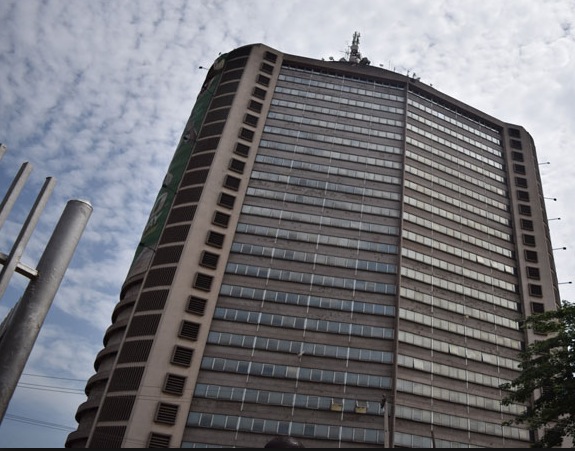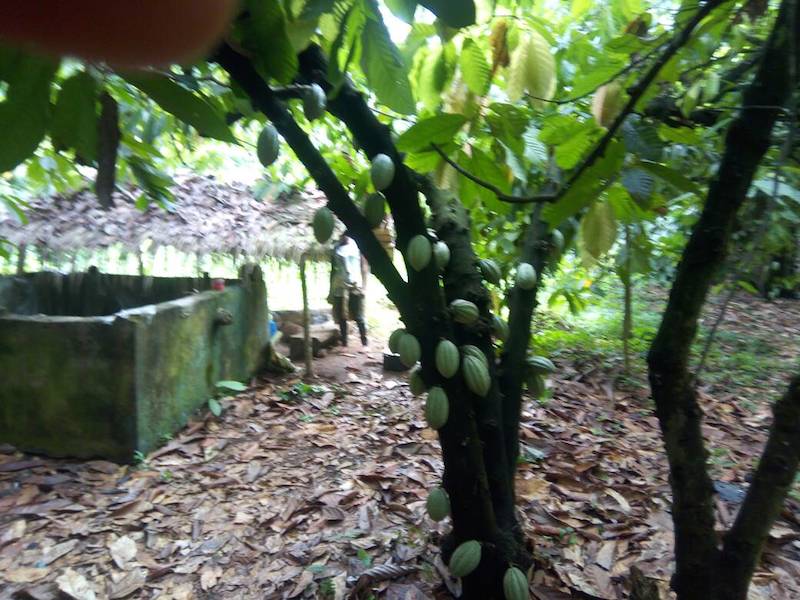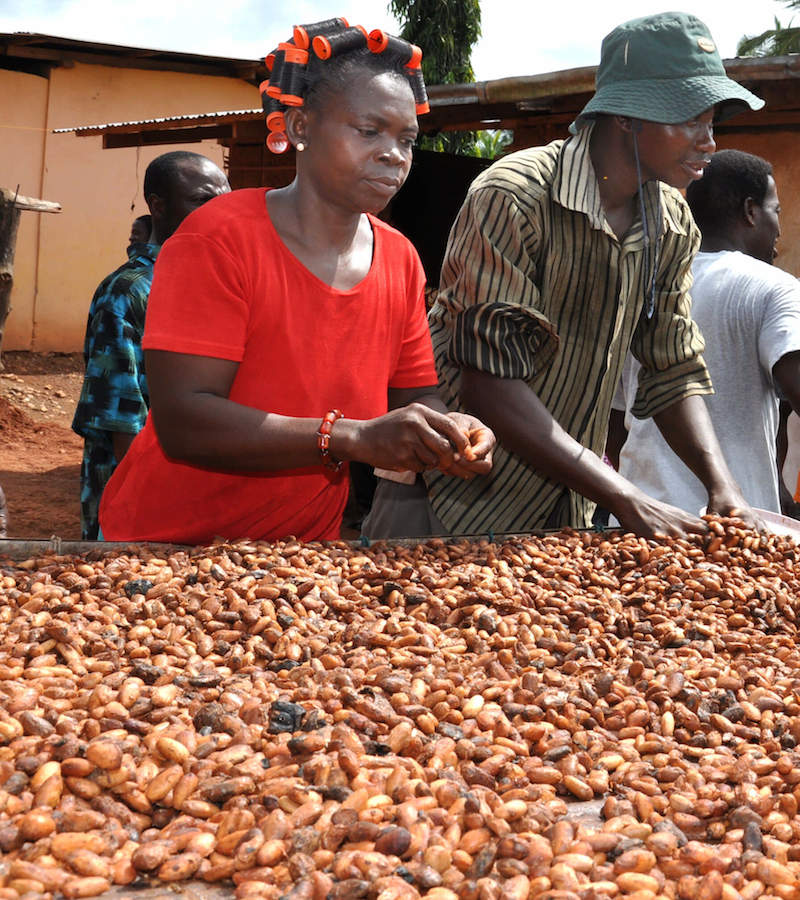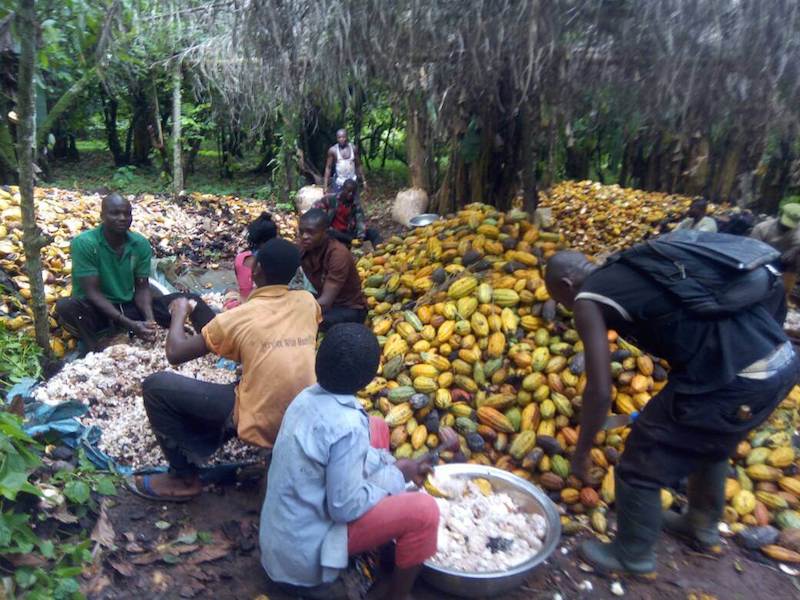Nigeria’s cocoa industry: Death of a golden goose
Despite Nigeria’s huge potential in cocoa production and processing, the country’s processors are still in dire straits, writes Josephine Okojie
“If you want to know the current state of the Nigeria’s cocoa sector, visit the Cocoa House,” 72-year-old Ademola Akinmulure, cocoa farmer in Omioliyan village in Ondo State, said, while describing the present-day cocoa industry.
In Ibadan, the 25-storeyed-Cocoa House towers above all adjoining buildings.
This house was once the tallest building in the country and was built with proceeds from export of cocoa beans in the 1960s.
The Cocoa House wears the chocolate colour and occupies over a hectare of land in the heart of Ibadan, southwest Nigeria.
It was once the pride of the country’s cocoa production.
But all that has changed, as the once beehive of cocoa activities is now a shadow of its former self, with most of the offices empty.
The skyscraper reflects the present situation of Nigeria’s cocoa industry.
“Cocoa house was our pride in the southwest Nigeria. Then, every farmer wanted to be a cocoa farmer. But now, all that has changed, as we do not pride ourselves in it again. That is the situation of our today’s cocoa industry in Nigeria,” Akinmulure, who has been a cocoa farmer for over 40 years, added.
In the 1960s and 1970s, Nigeria was a major cocoa producer and supplied most of the world’s demand.
Cocoa was a major revenue and foreign exchange earner for the country and provided millions of jobs for the people, especially those in the southwest region.
Several years down the line, after the discovery of oil in commercial quantity, the once major cocoa producer now lags behind Ivory Coast, Ghana, Indonesia, Ecuador and Cameroon in cocoa production, according to latest data of International Cocoa Organisation (ICCO) 2016/2017 season.
The reasons for this are not far-fetched. BusinessDay investigations in Ondo, Cross River, Edo and Ogun states found that lack of improved seedlings, high numbers of un-rehabilitated trees, aging farmers, low level of investments in the industry and bad weather, among others, are major reasons for Nigeria’s loss of ‘cocoa power’ in the global market.
In fact, Nigeria was unable to supply large quantities of cocoa to the world in 2016 despite rise in the prices of ICE and Liffe cocoa beans.
“Most of our cocoa fields are old,” said Sayina Rima, national president, Cocoa Association of Nigeria (CAN).
“More so, lack of hybrid seedlings has remained a major challenge for farmers. This is making the country not to get full economic benefits from growing cocoa,” Rima said.
“The implication of this is that the cultivation of cocoa is no longer a profitable crop for many farmers and, as a result of this, the nation’s quantity and quality of cocoa is declining,” Rima explained.

Sorry state of cocoa industry
Walking through the gate of FTN Cocoa Processors Plc, located at KM 9, Monatan-Iwo Road in Ibadan, Oyo State, my gaze caught the lush green grass adorning the factory walls and the well-constructed structures adjacent each other. It was a beauty to behold.
But upon entering the factory that sits on 4 acres of land, however, I discovered that the scenery outside does not truly depict the situation inside.
The Nigerian Stock Exchange-listed FTN, with an installed capacity of 20,000 MT, had only processed 600 MT of cocoa beans in the first half of 2018, BusinessDay found.
The company has been struggling to survive over the past five years and this is evident in its yearly financial statements.
According to details in the company’s nine- month financials in 2017, FTN reported a 59.4 percent increase in its loss after tax— from N263.4 billion in 2016 to N419.7 billion in 2017.
The company also reported a 97 percent drop in revenue, from N842 billion in 2016 to N23 billion in 2017 and a whopping 99 percent drop in cocoa export sales— from N508.2 billion in 2016 to N1.9 billion in 2017.
Similarly, a 94percent drop in local cocoa sales, from N334 billion in 2016 to N21 billion in 2017, was reported.
While most firms listed on the Nigerian Stock Exchange have already released their q1 2018 and preparing to release q2, the reserve is the case for FTN as the company is yet to release its full 2017 report.
The company last paid dividend to its shareholders in 2010.
FTN case is similar to any of the indigenous cocoa processors currently operating in the country.
Cumulatively, Nigeria’s cocoa industry is operating at less than 20 percent compared with 80 percent of the 90’s, findings show.
This has led to a decline in the country’s value-addition in recent years, resulting in a $2 billion annual loss, industry data show.
Value addition on the decline
Nigeria once had 27 cocoa processing factories in the 1970’s, but the number fell to eight in the 2000s, with a combined installed capacity of 150,000MT.
Today, Africa’s most populous country has only five functional factories with a combined utilisation capacity of less than 30,000MT per annum, BusinessDay gathered.
Currently, Nigeria’s cocoa processing industry is operating at less than 20 percent, owing to a combination of many factors, BusinessDay investigation shows.
High operating cost, coupled with higher import duty in European markets and farmers’ preference to sell to merchants— who offer premium price over processors—, has made it unattractive for Nigeria’s remaining five cocoa processing factories to tap export demand for butter, cake and powder.
BusinessDay’s onsite investigation at Ile Oluji Nigeria Limited, Nigeria’s oldest cocoa processing firm, found that the company has only processed 2,000 metric tons since the beginning of the year, which is by far below its 30,000 metric tons installed capacity.
This is because of absence of long-term financing and accumulation of debts.
“Our capacity utilisation in the industry is less that 20 per cent because most of the cocoa processors are really under the heavy weight of debt. The total debt in the industry today is not less than N50billion,” Akin Olusuyi, managing director, said.
“Despite special funds provided by the government for us, the least we pay as interest is 12 percent at 360 days, while the least for commercial banks is 26 per cent at 360 days,” Olusuyi added.
Also, Multi-Trex Integrated Foods PLC, Nigeria’s largest cocoa processing factory, with a production capacity of 65,000MT per annum, has since been shut down by the Asset Management Corporation Organisation of Nigeria (AMCON).
Multi-trex was shut down in June 2015 over a contested sum of N8.5 billion Eligible Bank Asset (EBA) bought from Skye Bank.
Since the shutdown of Multritrex Integrated 65,000 MT-capacity factory, Nigeria has seen its cocoa processing reduce by over 26 percent, according to BusinessDay’s calculations.
Moreover, Nigeria’s cocoa cake, powder and butter attract a 6.1 percent and 4.2 per cent import duty respectively in Europe.
This is bad for Nigerian cocoa exporters in terms of profitability, especially when cocoa products from other countries attract zero per cent.
What this means is that Nigerian cocoa struggles to compete favourably in the global market.
Players point at Nigeria’s failure to sign the Economic Partnership Agreements (EPA) advanced by Europe as one reason for the imposition of duty.
The EPA is a scheme targeted at creating free trade between the European Union and the African, Caribbean and Pacific Group of states.
Declining cocoa production
In the 1960s, Nigeria accounted for 18 percent of world’s cocoa and was one of the big three producers in the world, but today, the country is the sixth largest producer and accounts for just five percent of global production, data from ICCO show.
Despite cocoa being the largest single foreign exchange earning commodity after oil for Nigeria, the country has failed to steadily increase its production over the years.
Indonesia, which grew almost no cocoa before the early 1980s when its production took off, is now the world’s third leading producer of cocoa beans, growing 315,000 metric tons in 2016/2017 season, according to ICCO.
Nigeria that was once the world leading producer of cocoa has seen its production decline from 240,000MT in 2013/2014 to 210,000 metric tons in 2016/2017, ICCO data state.
Long years of dis-investment and inability of Africa’s most populous country to sustain and improve its production of cocoa have led to sharp decline in productivity.
With the high volatility in crude oil prices and fall in government revenue, experts have continuously called for the diversification of the economy, and cocoa, Nigeria’s flagship export product, has the potential to drive the country economic growth and development.

Old trees
Nigeria’s cocoa sector is badly hurt by lack of investments that have seen many trees age in the last five years.
“There are no new investments taking place in the industry. This makes most of the cocoa trees very old,” Olusuyi said.
“Cocoa production has been declining for some time now and this is as a result of a lot of old plantations across main producing areas,” Olusuyi stated.
The country’s cocoa industry is currently plagued by low productivity of less than 0.350 tons per hectare when other leading countries are producing about two to five tons per hectare of improved variety, according to the Institute of International Tropical Agriculture (IITA).
Experts agree that there is a need to increase Nigeria falling cocoa production.
To achieve this, Anna Muyiwa, plant biotechnologist, Cocoa Research Institute of Nigeria (CAN), said the country must start rehabilitating old cocoa plantations and develop more hybrid varieties.
“We need to rehabilitate our old cocoa trees in all cocoa producing states. A completely rehabilitated cocoa plantation of proven clone will produce as much as 2.5 tons per hectare,” Muyiwa said, stressing the need to develop more hybrid varieties
“Nigeria’s cocoa average yield per hectare is among the lowest in the world and this is due to old age of most cocoa plantations,” she further said.

Aging farmers
The average age of cocoa farmers in Africa’s largest economy is 60 currently, implying that the sector is yet unattractive to Nigeria’s young population.
“The average age of a farmer in Nigeria today is 60 years. For a crop that is highly labour-intensive, 60 years will not give the maximum impact in the industry,” Rima said.
“Tree crops like cocoa suffer the most. We need to start making cocoa and the like attractive to the youths through incentives, because the investments in tree crops are very high and most youths cannot afford it,” he added.
Lack of technology and innovation in the sector has likewise continued to make farming unattractive to Nigeria’s younger population.
“Youths will only find agriculture attractive if there are innovation and technology in the sector. Technology is very crucial if Nigeria really wants youths to embrace agriculture and boost its productivity,” Abiodun Olorundenro, operations manager, Aquashoots Nigeria, said.
Currently, the Federal Government is making efforts to make agriculture more attractive to the youths, but such efforts have yielded little impact as most young people do not want to be involved in the drudgery of agriculture, experts say.
They add that failure to make agriculture attractive to the younger generation would be disastrous to the country as population continues to grow at about 2.6 percent per annum.
“If we are serious to feed ourselves as a nation, we must attract the younger generation to farming. If we fail to achieve this, our food import bill will continue to rise,” Olorundenro said.

Inputs still a problem
With internal and external crisis rocking Nigeria’s Cocoa Research Institute (CRIN) over the last four years, not much has been done in the areas of research and transmission of modern technology in the subsector to cocoa farmers.
There has been battle for leadership in the institute over the last three years, making CRIN have an acting director general within the period.
In addition, Nigeria’s agricultural research institutes embarked on a four-month strike that ended in March, 2018.
The strike was to demand for more research funding by the government and a review of scientists’ condition of service at the various institutes.
The crisis in CRIN has also channelled available international research funding to the Ghana Cocoa Research Institute (CRIG) with little or none coming to CRIN over the years, despite having the highest number of scientists in the region.
“All the funds for cocoa development meant for West Africa goes to the Ghana Cocoa Research Institute because of the never ending crisis in the Nigeria’s Cocoa Research Institute,” Rima said.
“The institute has been having internal crisis over leadership and this has crippled activities in the research centre. Also the recent strike embarked upon by agricultural research institutes that lasted over three months was a problem as well,” Rima added.
This has made it difficult for farmers to easily have access to hybrid seedlings for the replacement of old and worn-out cocoa trees all year round.
“We do not get seedlings whenever you want it because CRIN is always on strike,” Adegoke Ademola, a cocoa farmer in Ajebandele in Ondo State, said.
Apart from inadequate supply of seedlings, the high rate of adulterated fungicide and insecticides in the market has impacted on the country’s cocoa production negatively.
“One of the biggest challenges we face as farmers is the issue of chemicals. Last year, all the chemicals I bought from the market were all adulterated and it destroyed my farm,” Emmaunel Ojong, a cocoa farmer in Effraya Etung Local Government in Cross River state, told BusinessDay.
“We need chemicals to protect our plantations against cocoa diseases such as black pod, army worm and swollen shoot disease,” Ojong added.
Irrigating cocoa fields
Cocoa can be an all-year crop if farmers can have access to sufficient water supply.
Over the years, Nigeria’s cocoa production has been seasonal as farmers continue to depend on rain-fed agriculture, which has limited the country from realising the full potential of the crop.
Agricultural activities are hard hit by irregular climate patterns, which hurt farming activities.
Experts who spoke with BusinessDay attributed this to climate change, which now affects the agriculture cycle, thus making irrigation farming the only way to cushion the effects of inadequate rainfall.
“The time has passed for farmers to be solely relying on climate-fed agriculture as the climate changes,” Akpan Imeh, a climate change expert, said.
Imeh stated that Cote D’Ivoire has expanded its cocoa productivity above Nigeria and every other country because it has evolved the cultivation of the crop beyond the traditional ways that rely on climate.
“If the soil forms a bond, then the soil will be able to withstand a lot of water stress, but if there’s no bonding, irrigation is badly needed,” he added.
But farmers have complained that lack of finance and inadequate government support have made it difficult for them to adopt irrigation farming.
“Lack of funds, coupled with inadequate government support, which, even when in existence, hardly trickles down to we smaller farmers, makes it difficult for us to adopt irrigation,” Oladokun Wasiu, a cocoa farmer in Iddo local government area of Oyo State, said.
The constant supply of water to the farm throughout the year— irrespective of climate— guarantees all-year high yield of cocoa.

Government neglect
Despite the potential of the Nigeria’s cocoa industry to change the fortunes of the Nigerian economy, with attendant exponential gains by way of earnings, employment and other spin-offs, the country is yet to fully improve production.
Cocoa, which remains one of the fastest selling and most desirable agricultural commodities in the international market due to the rapid growth and expansion of chocolate confectioneries and other products, is still neglected by the government.
Over the years, government has mouthed support for cocoa farming and processing, claiming that it is serious with making the industry one of the largest foreign exchange earners.
But various government policies have not yet made it beyond the talking stage.
The Muhammadu Buhari-led government promised to revive cocoa production and make payments of backlogs of the Export Expansion Grant (EEG), but this is yet to happen.
“We are yet to access the EEG that was designed to cushion structural misalignment in our economy since 2013. Since last year, we have been given approval by NEXIM and our banks but we are yet to get it,” Akin Laoye, executive director, FTN Cocoa Processors PLC, said.
Promoting local cocoa consumption
One major challenge facing Nigeria’s cocoa industry is poor local consumption. Nigeria has no chocolates manufacturer at the moment despite that the industry is worth about $10 billion globally.
Cocoa is the major input for the production of chocolates. Some beverage companies in Nigeria have their plants in Ghana and get their cocoa from the West African country.
“We should produce, process and consume the final products of cocoa like cocoa drink and chocolate. This would help the country hedge against price volatility at the international market,” Robo Adhuze, chief operating officer, Centre for Cocoa Development Initiative, said.
“We currently consume less than five percent of what we produce. Nigerians are yet to understand the health benefits of consuming cocoa. We need to increase our cocoa consumption and not just exporting all we produce,” Adhuze said.
All the chocolates consumed in Nigeria are majorly imported from Europe and the United States.

Way Out
Experts say Nigeria must begin now to rehabilitate its old cocoa plantations, incorporate modern agricultural techniques in expanding its cocoa production and ensure that farmers have easy access to hybrid seedlings, while ensuring that only approved agro chemicals get to the markets.
They add that the country must ensure the development of the cocoa value chain, which has great prospects in the export markets.
Analysts believe that to drive value- addition, government must provide long- term financing to processors at a single- digit interest rate and provide stable power supply to help reduce production. This is believed to make them competitive.
Logistics channels, marketing and connection to the international market through appropriate agencies like the Nigerian Export Promotion Council (NEPC) will spur cocoa cultivation, according to experts.
Similarly, the government should incentivise local investors and private sector participation by providing single-digit interest rates to encourage investments and activities in the cocoa sector, players say.
“Unless there is a well-defined policy for cocoa production and processing, the country would continue to export its jobs and lose revenue it would have generated through value addition,” Olusuyi, who was earlier quoted, said.

